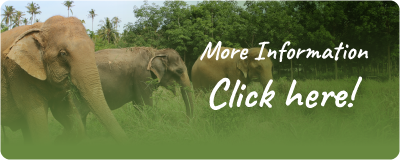Thailand's Elephants: History & Ethical Encounters

The majestic elephant is as central to Thailand’s identity as its ancient temples and beaches. When you visit Thailand, the story of elephants is everywhere—from art and religious symbols to the tourism industry. However, the lives of these magnificent creatures have changed dramatically over time. This guide explores the deep-rooted history of Thailand's elephants, their current conservation status, and how modern travelers can ensure their visit contributes to a brighter future for them through ethical encounters.
Uncovering the Elephant's Role in Thai History
For thousands of years, elephants in Thailand were revered as symbols of royal power, wisdom, and prosperity. They were vital for logging and heavy labor, helping to build the kingdom. In ancient Siamese warfare, elephants, often clad in armor, were the ultimate military "armored tanks," serving as formidable mounts for kings and warriors in legendary elephant duels. The royal connection is strongest with the rare "white elephant" (which is actually a dusky pinkish-grey), traditionally considered sacred and a symbol of the monarch's wealth and divine authority. This long-standing relationship has woven Thailand's elephants deeply into the nation's cultural fabric.
Elephants in Thailand Today
Today, the total population of elephants in Thailand is split into two distinct groups: wild and domestic. Following the ban on commercial logging in 1989, many domestic elephants and their caretakers, known as mahouts, shifted into the growing tourism sector. This transition provided a new purpose for these animals and a livelihood for their human families. While this new role can be beneficial when managed ethically, it has also led to new welfare challenges.
Endangered Status of Elephants in Thailand
Despite their historical importance, the Asian elephant is officially listed as an Endangered species on the IUCN Red List. Their wild population across Asia has plummeted by at least 50% over the last three generations. In Thailand, threats to Thailand's elephants include habitat loss and fragmentation due to human expansion, which often leads to dangerous human-elephant conflict as the animals search for food. Poaching, though less widespread than habitat loss, remains a threat. Supporting conservation-focused organizations is critical for the survival of both wild and domestic elephants in Thailand.
Your 5 Essential Steps for an Ethical Elephant Encounter
-
Say No to Riding and Performing : The ability for an elephant to tolerate being ridden or to perform unnatural tricks requires cruel, punishment-based training to break its spirit. Never participate in elephant riding or shows.
-
Observe, Don't Interact : True ethical sanctuaries prioritize observation, allowing the elephants in Thailand to behave naturally—for example, walking, socializing, and feeding—with minimal human interference.
-
Research the Venue : A truly ethical facility will have chains only for medical necessity and will not engage in captive breeding for the tourism trade.
-
Choose a Safe Distance : Respect the animal's size and wild nature. Ethical venues keep a safe distance between visitors and the elephants for the well-being of both.
-
Support Responsible Tourism : Your support should directly fund ethical elephant caring practices, veterinary costs, food, and the retirement of formerly exploited animals.
Types of Elephants Found in Thailand

The species of elephant found in Thailand is the Indian elephant (Elephas maximus indicus), which is a subspecies of the Asian elephant.
Wild Elephants in Thailand
There are an estimated 3,000 to 4,000 wild elephants in Thailand, residing in protected forest complexes, most notably along the border with Myanmar and in national parks like Khao Yai. These wild herds require large expanses of land to roam, and their greatest threat is the shrinking and fragmentation of their natural habitat. Government and non-government organizations are working hard on anti-poaching and human-elephant conflict mitigation efforts to ensure their survival.
Domestic Elephants in Thailand
The domesticated population is roughly equal to the wild one. These elephants in Thailand are under human care, often with traditional mahout families, and cannot simply be released back into the wild. Many have never learned how to survive on their own, and the remaining wild habitats are already at capacity. Their welfare relies entirely on responsible human stewardship, which is why ethical tourism venues play a vital role in providing them with a dignified, natural retirement.
Are There Ethical Elephant Tourism in Thailand?

Yes, ethical elephant tourism is not just possible but is a growing and vital movement. The best sanctuaries focus on the welfare of the animals, providing a home for rescued elephants retired from the logging or entertainment industries. These operations provide a model for responsible wildlife tourism in Samui and other destinations. Your visit becomes a direct contribution to their care. For instance, reputable places focus on allowing the elephants to graze, play in mud, and socialize freely. One excellent example of this responsible approach is a true Koh Samui elephant sanctuary that prioritizes the animals’ health and happiness.
Finding Your Destination for an Ethical Encounter at Samui Elephant Home
To make a truly positive choice for your trip to Koh Samui, look for places dedicated to the highest standards of animal welfare. Samui Elephant Home is one such sanctuary that has championed the cause of ethical elephant tourism. By joining a program here, you support a safe, natural, and caring environment where rescued elephants can simply be elephants, free from the chains and exploitation of the past.
FAQ
1. Why is Thailand famous for elephants?
Thailand is famous for elephants due to their deep cultural and historical significance, having been essential in warfare, royal processions, labor, and their revered status in Buddhism.
2. Are there elephants native to Thailand?
Yes, the species of elephants in Thailand is the Indian elephant (Elephas maximus indicus), which is native to the region and a subspecies of the Asian elephant.
3. Why is the elephant the symbol of Thailand?
The elephant is the national animal and symbol of Thailand because it represents royal power, prestige, longevity, and religious significance, particularly the revered "white elephant."
4. Are Thai elephants friendly to humans?
While domestic elephants in Thailand are accustomed to human presence, they are still wild animals. Any close contact (like riding or bathing) is the result of difficult training, and truly ethical sanctuaries maintain a respectful distance.
5. Do elephants roam free in Thailand?
Yes, there are wild elephants in Thailand that roam free within designated protected national parks and forest complexes.










